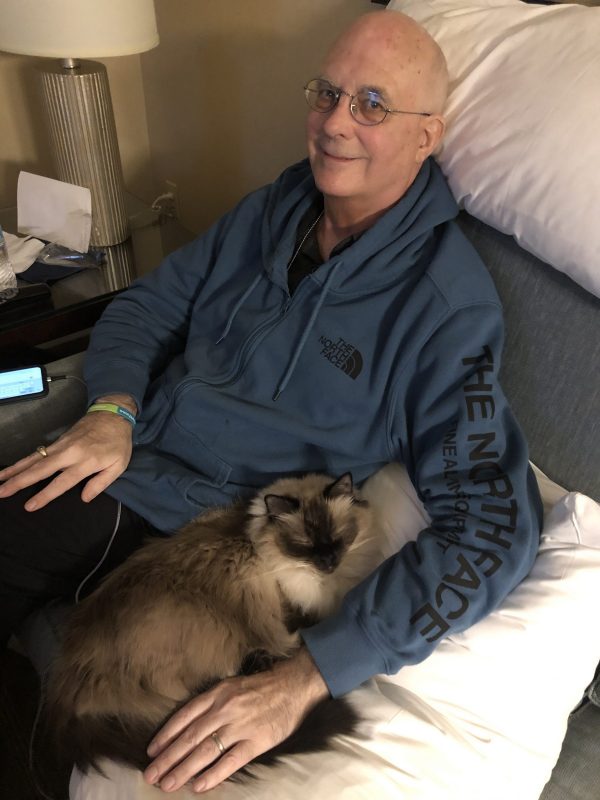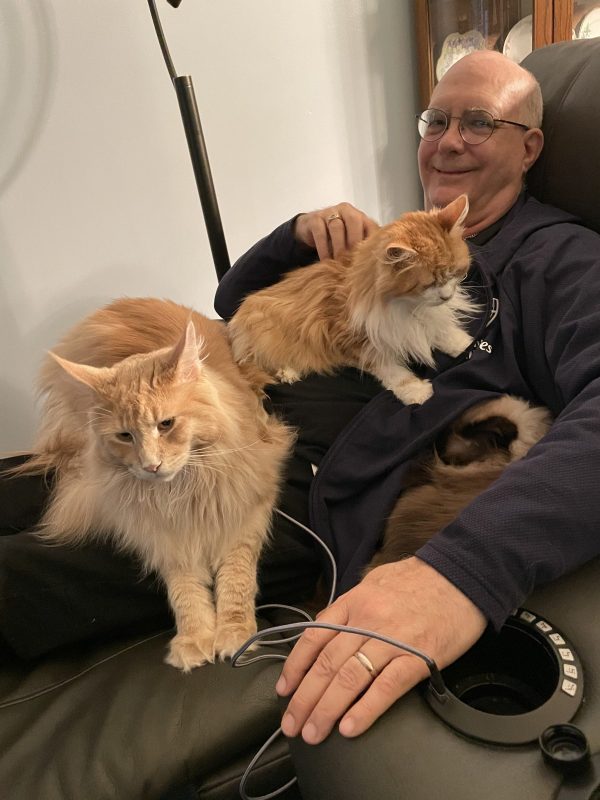My Care Partners Share Their Perspectives on the IPF Roller Coaster

The dynamic between an ill person and the loved ones who care for them should extend beyond the caregiver providing and the sick person receiving. The relationship should go two ways — thus, a care partnership.
I define a care partner based on a presentation given at the Pulmonary Fibrosis Foundation Summit 2019. The goal of a care partnership is to furnish the best quality of life for each person. Spouses, family members, and close friends can all be care partners.
My care partners include:
- Dana, my wife
- Terri, my daughter
- Greg, my U.S. Military Academy classmate, and his wife, Barbara
- Paul, another classmate, and his wife, Linda
This year, I asked Dana, Terri, Barbara, and Linda to share their stories for Pulmonary Fibrosis News’ initiative “30 Days of PF.” Greg and Paul wrote their accounts last year for the Kansas City Foundation for PF. Combined, their stories provide a unique, 360-degree perspective on riding the IPF roller coaster.
Dana
Dana is a registered nurse. She said, “I have been a caregiver all my life, but now I was becoming a care partner. What’s the difference, you might ask? Well, as a nurse, I have given care to many people throughout my career. I did so with empathy and caring. That is the reason I became a nurse and a part of the nursing oath I took. But being a care partner is different. A care partner is someone with a vested interest in the person with whom you are going on a healthcare journey unlike any other. It’s a journey with a loved one, and the emotions a care partner feels are deeper and more connected than with caregiving.”
Dana is my life partner and care partner. She wrote about being my care partner during transplant.
I cannot thank her enough for taking care of me through the years of IPF and transplant. She helped me physically and mentally, and understood what I was going through. Dana left me alone when I needed it. IPF places a strain on both partners, but we were able to work through the issues. Given the physical and emotional constraints, I tried to burden Dana as little as possible.

Raj the cat provides support to Kevin in October 2020. (Photo by Dana Olson)
Terri
Terri’s story was about the emotional times on the roller coaster. I tear up every time I read it.
It was satisfying and calming to know that Terri was willing to step in if Dana couldn’t be around to help me. She provided more emotional support than physical, which is always needed. Terri traveled between Kansas City and St. Louis, Missouri, multiple times during my transplant recovery to help and attend the discharge education training.
Terri is an occupational therapist, and made me think outside the box to accomplish tasks while limiting the burden on others. One weekend, she and my 9-year-old grandson stayed with me, which allowed Dana to bring me our “emotional support” cats.

Mo and Garfield comfort Kevin last May. (Photo by Dana Olson)
Friends
Barbara’s story was about travel. Taking trips together took my mind off my illness and provided quality of life. Additionally, these excursions brought us closer. As a nurse, Barbara understood what Dana and I were going through.
Linda’s account of her experience focused on asking questions. Linda always asked questions during our Zoom calls. When I answered, she provided the emotional support I needed. Other friends didn’t ask as many in-depth questions. Her curiosity enabled everyone in our friend group to learn more about IPF and pass the information onto their friends in turn.
But Linda left out the other role she played. She was the jester of our group. Laughter helped me through the bad times, but it was a double-edged sword. Linda made jokes, and I laughed. Unfortunately, my deep diaphragm laugh made my chest hurt badly. During a Zoom meeting with friends, I had to bend over, holding my cough pillow to ease the pain. But don’t get me wrong, the pain was happy — like tears of joy.
Greg’s and Paul’s testimonials reminded me of what I’d forgotten about the roller coaster ride. They provided both emotional and physical support. Whenever we took a trip, Greg and Paul helped by carrying my extra portable oxygen concentrator. Also, to keep me honest about walking daily on the treadmill, Paul and Greg would email me if I hadn’t completed it.
As life continues, Dana and I return the emotional support offered by Greg, Barbara, Paul, and Linda as they face health issues in their own families. We are there for them on their new roller coasters.
I am forever grateful for all my care partners. If you have PF, consider asking your care partners to write their stories for you. You might be wonderfully surprised.
***
Note: Pulmonary Fibrosis News is strictly a news and information website about the disease. It does not provide medical advice, diagnosis, or treatment. This content is not intended to be a substitute for professional medical advice, diagnosis, or treatment. Always seek the advice of your physician or other qualified health provider with any questions you may have regarding a medical condition. Never disregard professional medical advice or delay in seeking it because of something you have read on this website. The opinions expressed in this column are not those of Pulmonary Fibrosis News or its parent company, Bionews, and are intended to spark discussion about issues pertaining to pulmonary fibrosis.









Leave a comment
Fill in the required fields to post. Your email address will not be published.